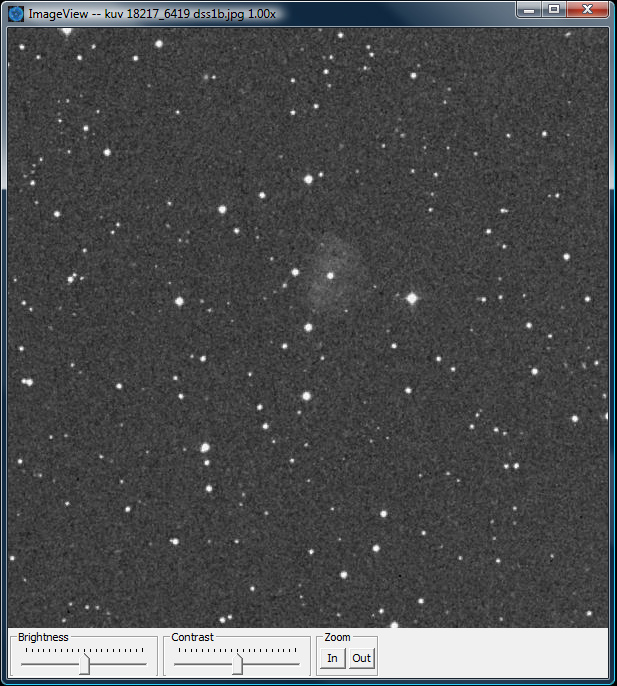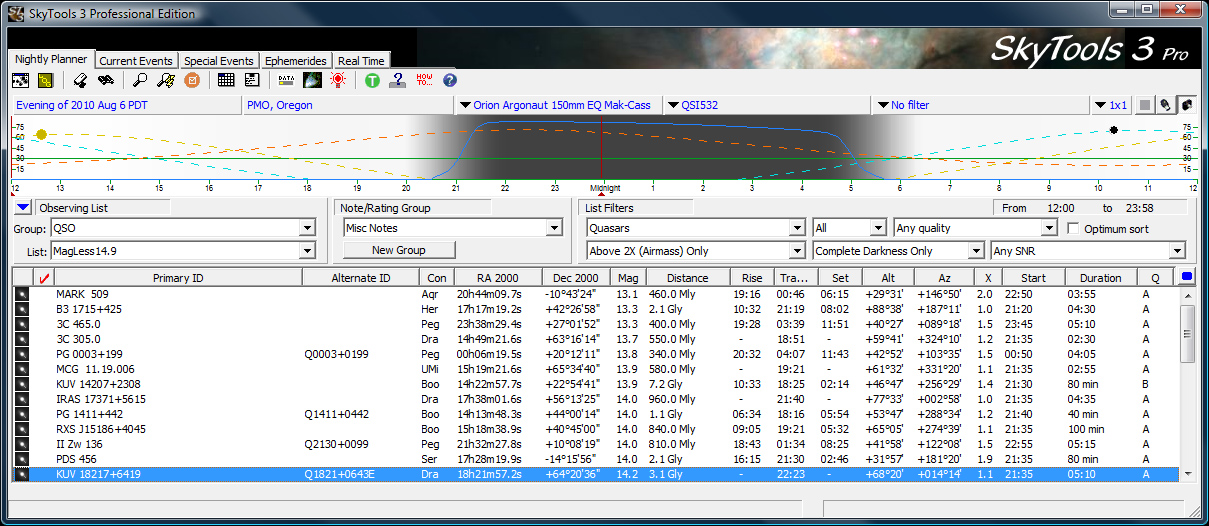|
Careful selection was done in picking Quasar
KUV18217+6419
for the redshift measurement.
SkyTools 3c Professional edition was used to generate a list of Quasar objects that were above two airmasses on August 6, 2010 at PMO. The list was sorted with brightest Quasar at the top. Next the following criterion were used to further reduce the list.
- The Quasar needs a clear space for its spectrum. The spectrum needs to be on a part of the sky that has no stars because the zero order of the field stars interfere with the Quasar spectrum. The following Quasars were rejected for too many field stars: MARK 509 and PDS 456. Below is the DSS KUV18217+6419 Image in SkyTools.

- A spectrograph without a slit is dependent upon imaging small stellar object to obtain a good spectrum. Extended object will reduce the affective spectrum resolution. The following Quasars were rejected for being extended objects: B3 1715+425, 3C 465.0, 3C 305.0, MCG 11.19.006, KUV 14207+2308, and II Zw 136.
- Position in the sky affects the seeing. The best position is directly overhead. The worst position is just above the horizon. The following Quasar was rejected for its poor position in the sky: PG 0003+199.
- A redshift of 0.234 to 0.440 will shift H-beta emission line into the 6,000 to 7000 Å range and it would provide a good emission line to measure with the CCD camera. The following Quasars were rejected for their poor redshift: MARK 509, B3 1715+425, 3C 465.0, 3C 305.0, PG 0003+199, MCG 11.19.006, KUV 14207+2308, PG 1411+442, RXS J15186+4045, II Zw 136, and PDS 456.
|
![]()

![]()
